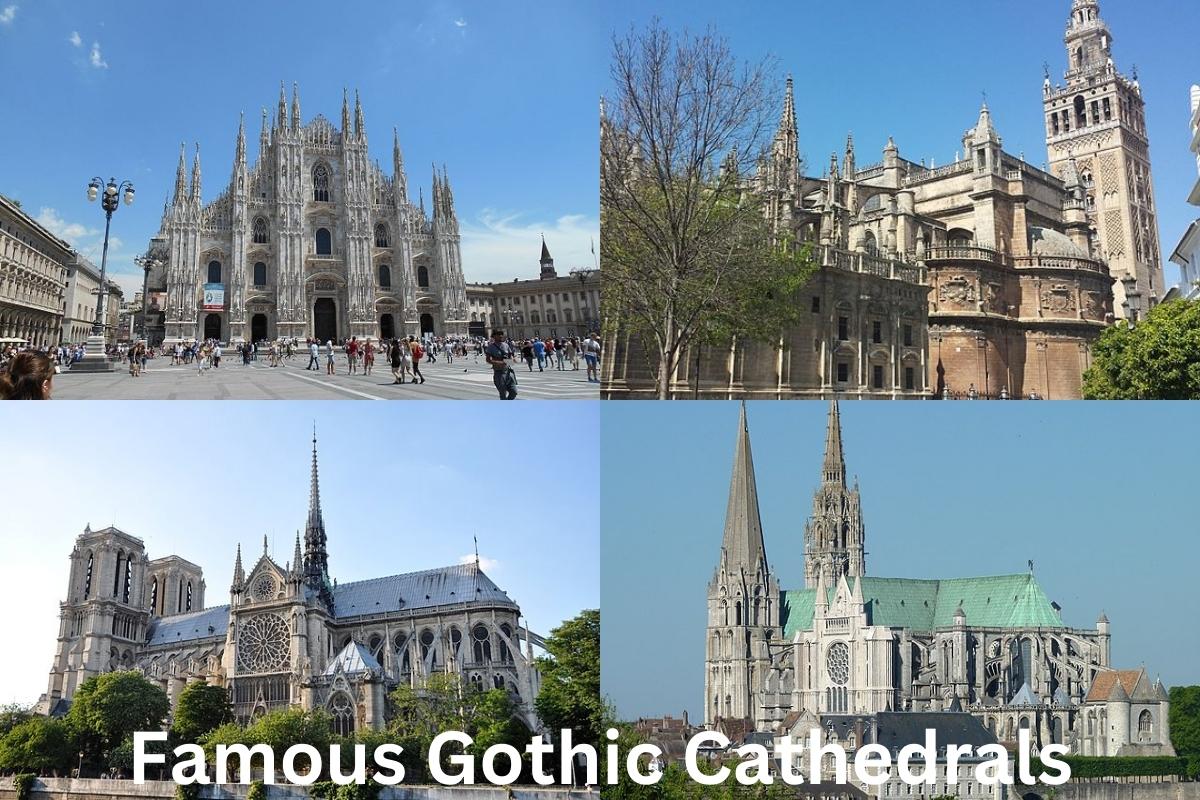Gothic cathedrals and churches are religious structures built in Europe between the mid-12th and early 16th centuries.
The cathedrals are renowned for their high height and extensive use of stained glass to illuminate the interiors. They were the tallest and biggest structures of their day, as well as the most visible specimens of Gothic architecture.
The Gothic cathedral not only revolutionized architecture, but it also brought new kinds of decorating, sculpture, and art.
Renaissance cathedrals and churches increasingly superseded Gothic cathedrals, and the ancient cathedrals, such as Notre Dame, were altered or destroyed (in the Low Countries, however, the Brabantine Gothic remained until far in the 17th century).
However, in the mid-nineteenth century, there was renewed interest in the Gothic cathedral, thanks in large part to Victor Hugo’s book Notre Dame de Paris, widely known in English as The Hunchback of Notre-Dame.
Many Gothic cathedrals and churches were restored, with varying degrees of success. Below are some of the most famous gothic cathedrals eve built.
Famous Gothic Cathedrals
1. Notre Dame de Paris
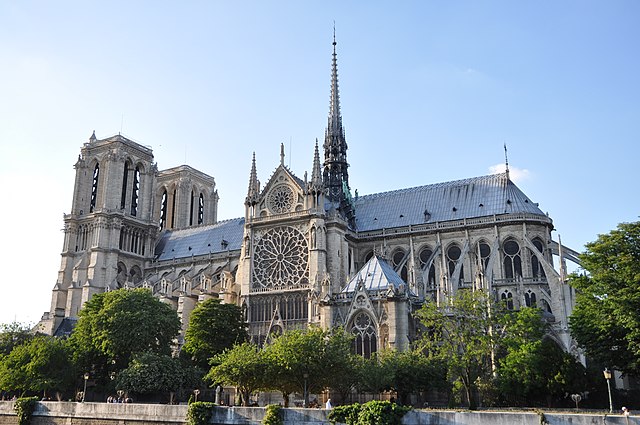
Notre Dame de Paris is one of the world’s most renowned cathedrals and churches. Every year, visitors from all over the globe go to Paris, France, and one of the city’s greatest attractions is the Notre Dame Cathedral.
It is located in the centre of Paris on the Île de la Cité, a middle island part of the Seine River. This massive Roman Catholic cathedral is one of the most well-known instances of architects using architectural innovations such as the rib vault and the flying buttress.
The building of Notre Dame de Paris began in 1163 A.D. Bishop Maurice de Sully was appointed to supervise the project’s first stages. After various architects oversaw the cathedral’s construction, it was ultimately finished almost two centuries later in 1345.
Notre Dame de Paris has been extensively damaged and desecrated throughout the years, particularly during the French Revolution and the twentieth and twenty-first centuries.
A fire damaged most of the cathedral’s ceiling, which was made up of intricate woodwork and pillars, although restoration operations are presently ongoing.
2. Chartres Cathedral
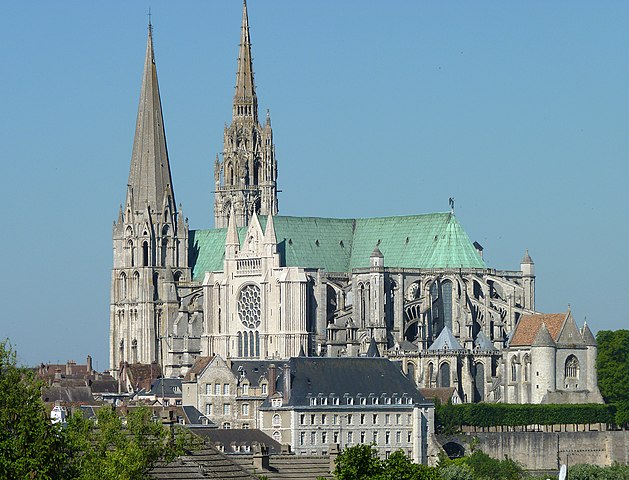
The Chartres Cathedral is another popular destination for Christians and other visitors in France. It is one of the most recognizable landmarks in Paris and the surrounding region, and it was named a UNESCO World Heritage Site in 1979.
It is also one of the first Catholic churches built in the Gothic style that is still intact today.
Construction on the Chartres Cathedral started in 1126, and it originally resembled a Romanesque structure in form and design. This, however, would not continue, as other architects who worked on the project eventually sought to make the structure seem more in the Gothic style of architecture.
The Chartres Cathedral was completed in 1252, although it is considered one of the most historic structures in the world.
It was erected on the foundation of an older construction built somewhere in the 7th or 8th century, and what is now the Chartres Cathedral was initially created by far earlier members of the Catholic religion dating back three centuries before work on the cathedral started.
3. Cologne Cathedral
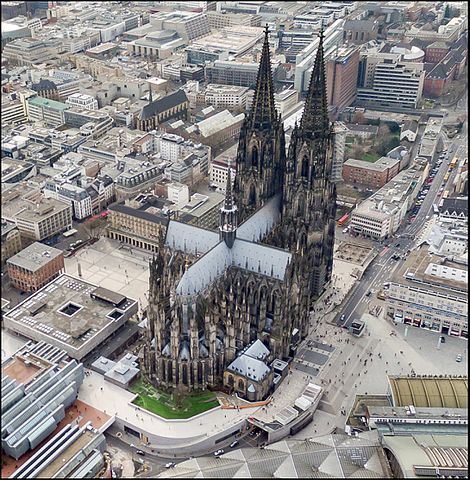
The Cologne Cathedral, which located along the Rhine River, is Germany’s most renowned cathedral.
The ancient church is also a symbol of Cologne and a great example of Gothic-style architecture, having been constructed during the 13th, 14th, and 15th centuries, when Gothic architecture was most popular in Europe.
Also Read: Famous Gothic Artists
The Cologne Cathedral was erected on top of an existing edifice that is thought to have been built by Roman soldiers during their occupation of the regions during the reign of Mercurius Augustus in the third and fourth centuries. Work of the church started in 1248 and was completed in 1473.
Work on the long-unfinished cathedral resumed in the nineteenth century, and the Cologne Cathedral was ultimately completed in 1880.
However, development on portions of the church continues to this day, with completion expected in the next years. The Cologne Cathedral houses some of Germany’s holiest shrines and sacred artifacts, more than any other cathedral.
4. Florence Cathedral
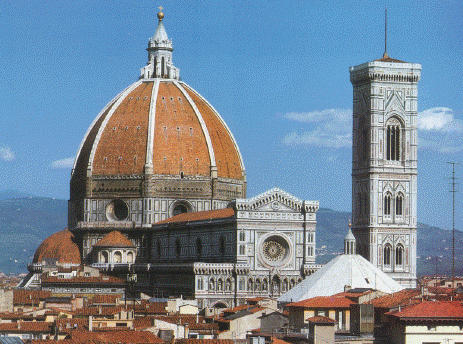
Florence Cathedral, commonly known as Santa Maria del Fiore, is one of the world’s largest cathedrals. Arnolfo di Cambio planned it in 1294, but building began in 1296.
It is well-known for its 19th-century Gothic revival architecture, stunning dome, and polychrome marble in pink, white, and green hues.
Filippo Brunelleschi designed the dome, which is one of the most stunning and prominent parts of this edifice. It is now the world’s largest brick and mortar dome.
Although the outside is the focal point of this construction, the inside, which is decorated in a gothic manner, is extremely magnificent.
The majority of the ornaments have been lost to time, and others have been relocated to the Museum Opera del Duomo for storage and exhibition. Nonetheless, the cathedral has stunning sculptures, frescoes, and mosaics created by prominent Florentine artisans.
You must not enter the building while wearing sandals, sunglasses, caps, or exposing your naked legs. If you want to visit, dress appropriately.
5. Milan Cathedral
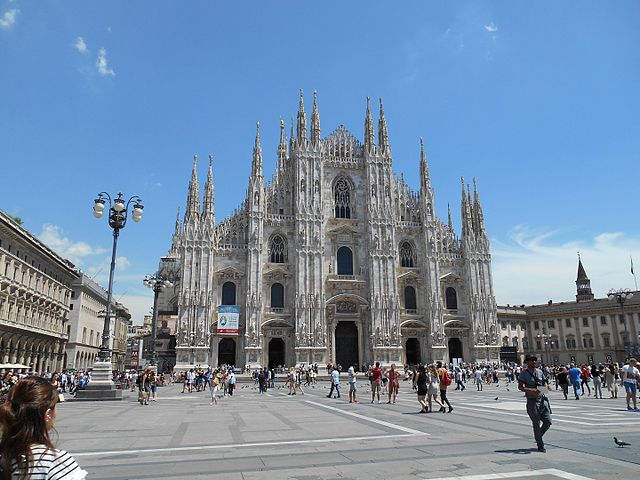
The Milan Cathedral is undoubtedly Italy’s most historically significant edifice. The structure was built over more than five centuries, and much of its design and architectural styles represent the gradual shift in culture and architecture over the nation’s history.
This cathedral is situated in Milan, which is located in Italy’s northern Lombardy region and has long functioned as its own city-state.
Architects working with Archbishop Antonio da Saluzzo designed the Milan Cathedral at first.
Construction on the project started in 1386, and Saluzzo received large sums of public funds under the pretence of finishing it, although many historians think he misappropriated most of the money.
Over the following six centuries, some of Milan’s finest brains and designers, including Leonardo da Vinci, would collaborate on the project. It was ultimately finished in 1965.
6. Westminster Abbey
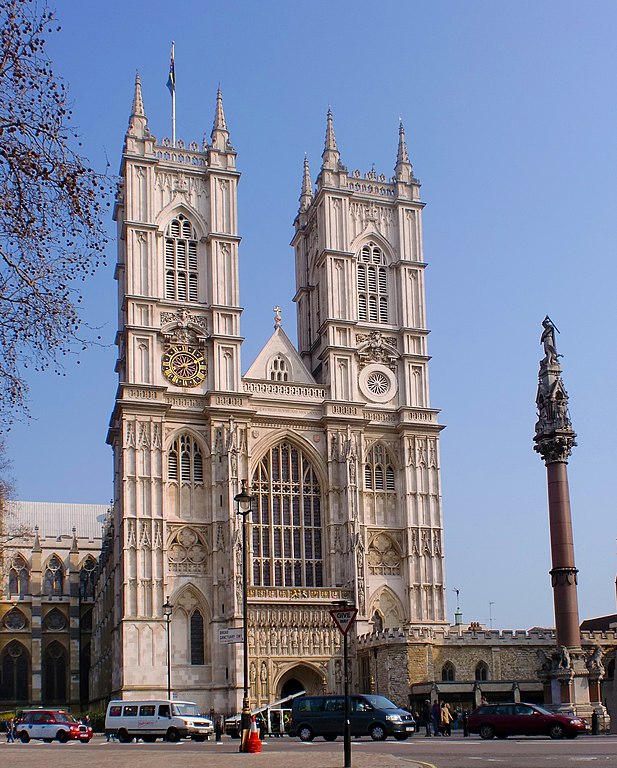
London is densely packed with historic structures of different importance. These include a variety of governmental entities, as well as conventional churches and other Catholic-related structures. Among these structures, Westminster Abbey is undoubtedly the most well-known in England’s capital city.
Westminster Abbey was erected on the site of an old church or worship place for early Christians, according to historians and archaeologists. The first documents pointing to the church’s structural roots date back to the 11th century, at the reign of Edward the Confessor.
In 1042, Edward, the last of England’s Anglo-Saxon monarchs, started the process of constructing the church to serve as his personal royal burial church.
It is thought to have been completed in 1065, a year before the king’s death. Westminster Abbey has been rebuilt and expanded since then, making it one of the most opulent cathedrals in the world.
7. Catedral de Sevilla
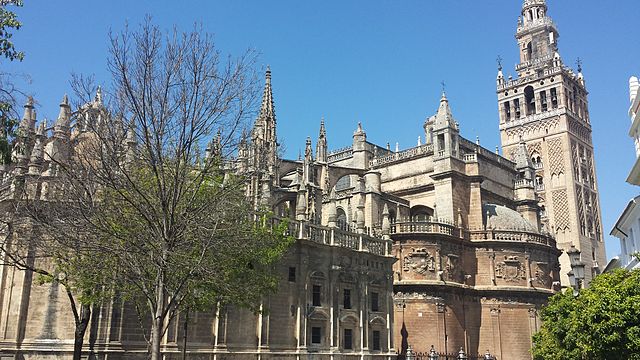
In comparison to the rest of Europe, Spain has its own particular architectural and cultural flare. This feeling of uniqueness extends to its cathedrals, with the Catedral de Sevilla generally regarded as one of the world’s most renowned and unsurpassed Catholic worship venues.
Andalusia, like many other parts of Spain, has been the location of several kingdoms and states over the period of several centuries. The Catedral de Sevilla is now a Christian cathedral, although it was once an Islamic mosque under the Almohad ruler Abu Yaqub Yusuf in the late 12th century.
Under Ferdinand III’s invasion of Western Europe, the mosque was conquered by Christian armies and transformed into a cathedral, albeit retaining much of its Islamic symbolism and style.
In 1401, the edifice was completely renovated and reconstructed to match other Christian monuments in Europe at the time, which were largely built in the Gothic architectural style.
8. Reims Cathedral
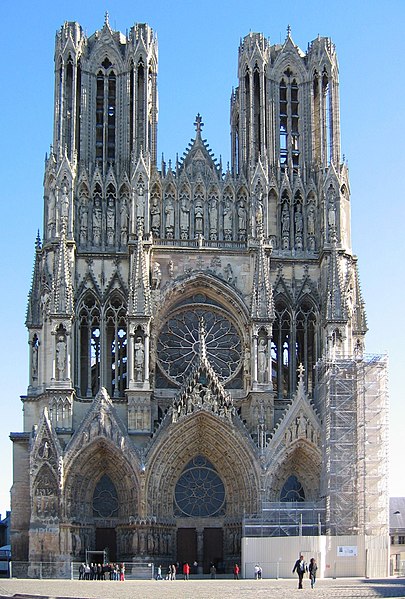
The Reims Cathedral, situated in the ancient city of Reims, France, is another well-known gothic monument in the globe. Notre-Dame de Reims is the official name, which translates to “Our Lady of Reims” in English. The cathedral has a plethora of gothic architectural features and was a church that was formally dedicated to the Virgin Mary upon completion. The Reims Cathedral was also the customary location for the coronation of France’s kings.
In 1211 A.D., construction on what is now known as the Reims Cathedral started. The huge cathedral, on the other hand, was erected on the site of an old church that is thought to date back to the 5th century A.D. It was most likely created in 425 A.D. by Bishop Nicasius. This cathedral is well-known for its ornate front face and the many antique artworks housed inside its walls.
9. Amiens Cathedral
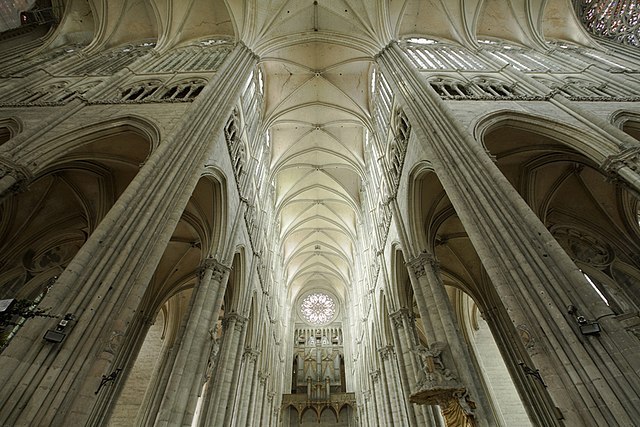
The Amiens Cathedral is one of the world’s most distinctive gothic-style buildings, as well as one of the most prominent historic landmarks in northern France. The cathedral is built on a hill above the River Somme and has a stunning front-facing front.
Construction of the Amiens Cathedral started in 1220 and was finished in 1270, a great feat for builders at the time. This Gothic cathedral is twice the size of Notre Dame de Paris and is the biggest in France.
10. St. Stephen’s Cathedral, Vienna
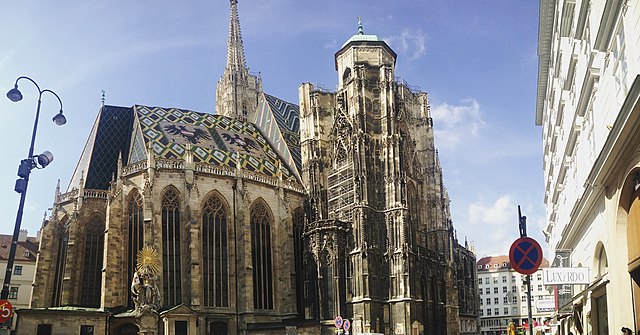
Vienna, Austria is regarded as one of Europe’s most historically significant cities. It is a site brimming with iconic monuments, historic architecture, and forms of creative expression. St. Stephen’s Cathedral is a popular tourist attraction in Vienna.
St. Stephen’s Cathedral, located in the centre of Vienna, is packed with diverse sculptures, paintings, and other artwork, but under and surrounding the cathedral are ancient catacombs, graves, and crypts whose origins remain unknown to many historians.
The cathedral’s construction started in 1137, and the major section of the building was finished only a few decades later, in 1160.
The interior of Vienna’s St. Stephen’s Cathedral is believed to be among the most magnificent of any Christian cathedral, with a number of spectacular stone relief sculptures and mosaic ceiling tiles along the façade.
Over the ages, members of the Catholic church have worked valiantly to keep the edifice in its pristine condition.

